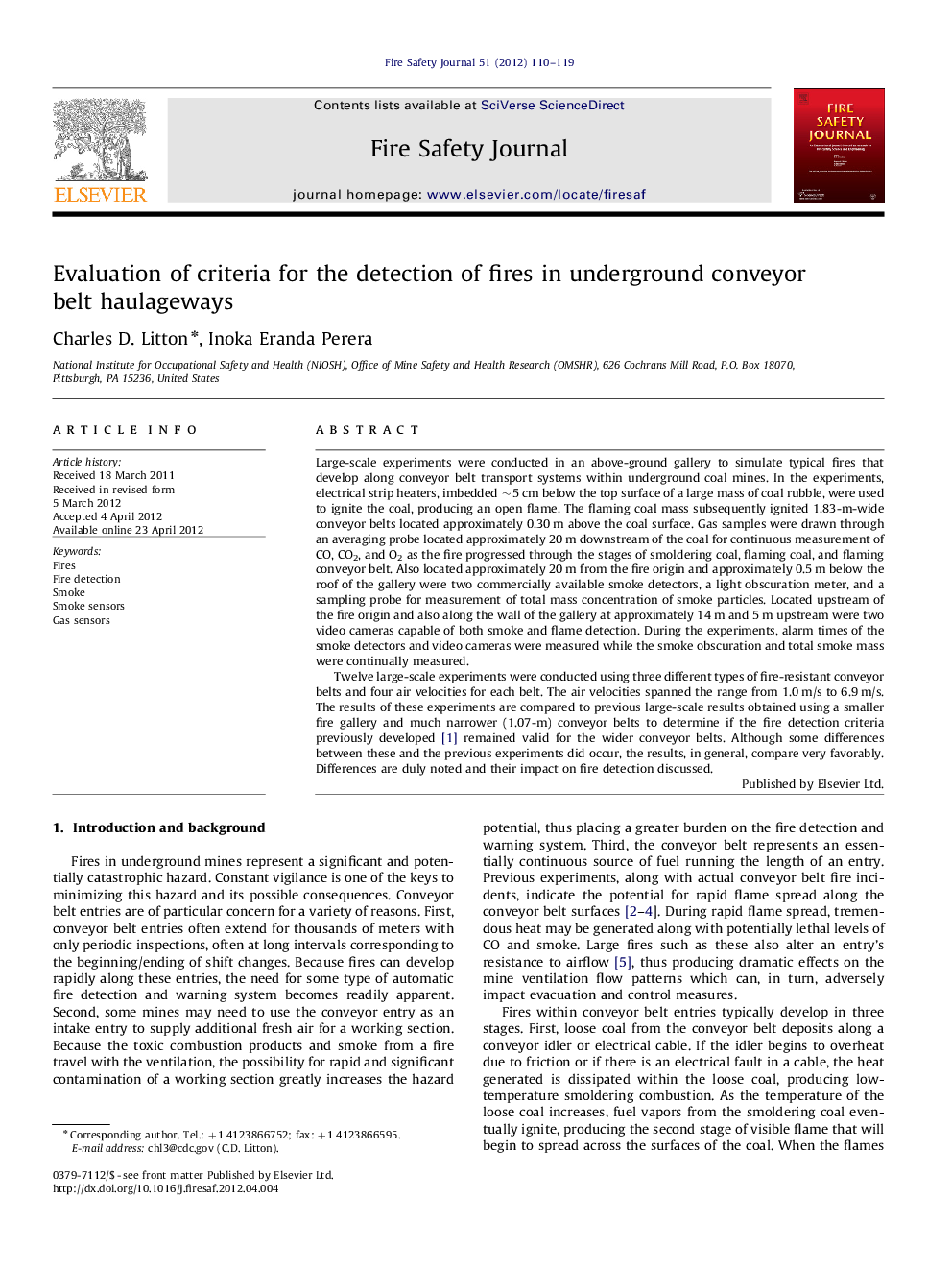| کد مقاله | کد نشریه | سال انتشار | مقاله انگلیسی | نسخه تمام متن |
|---|---|---|---|---|
| 270071 | 504726 | 2012 | 10 صفحه PDF | دانلود رایگان |

Large-scale experiments were conducted in an above-ground gallery to simulate typical fires that develop along conveyor belt transport systems within underground coal mines. In the experiments, electrical strip heaters, imbedded ∼5 cm below the top surface of a large mass of coal rubble, were used to ignite the coal, producing an open flame. The flaming coal mass subsequently ignited 1.83-m-wide conveyor belts located approximately 0.30 m above the coal surface. Gas samples were drawn through an averaging probe located approximately 20 m downstream of the coal for continuous measurement of CO, CO2, and O2 as the fire progressed through the stages of smoldering coal, flaming coal, and flaming conveyor belt. Also located approximately 20 m from the fire origin and approximately 0.5 m below the roof of the gallery were two commercially available smoke detectors, a light obscuration meter, and a sampling probe for measurement of total mass concentration of smoke particles. Located upstream of the fire origin and also along the wall of the gallery at approximately 14 m and 5 m upstream were two video cameras capable of both smoke and flame detection. During the experiments, alarm times of the smoke detectors and video cameras were measured while the smoke obscuration and total smoke mass were continually measured.Twelve large-scale experiments were conducted using three different types of fire-resistant conveyor belts and four air velocities for each belt. The air velocities spanned the range from 1.0 m/s to 6.9 m/s. The results of these experiments are compared to previous large-scale results obtained using a smaller fire gallery and much narrower (1.07-m) conveyor belts to determine if the fire detection criteria previously developed [1] remained valid for the wider conveyor belts. Although some differences between these and the previous experiments did occur, the results, in general, compare very favorably. Differences are duly noted and their impact on fire detection discussed.
Journal: Fire Safety Journal - Volume 51, July 2012, Pages 110–119